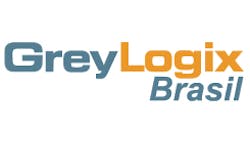One of the main benefits of IIoT is it lets users bring in more detailed data from more and further away locations than it’s possible to gather manually. What then becomes crucial are associated software and other tools can better organize all this information when it arrives.
“We talk about using the three i’s in ‘intelligent IIoT’ as a label for simply turning raw data into useful knowledge that makes sense to each user,” says Renato Leal, executive director at GreyLogix Brasil, a system integrator in Florianópolis, Brazil, and a member of the Control System Integrators Association. “System integrators already use a lot of edge and cloud computing, so we can mix the right hardware and software for individual customers that will be the easiest for them to swallow and operate, whether they’re running in pulp and paper, food, bioenergy, water/wastewater or other process industries. We give users black box functions without having to buy an actual box, such as hardware that’s usually tied to one supplier, can’t talk to software from other vendors, and requires support and maintenance.”
GreyLogix consults with clients on what operations they’re trying to perform, what data they need to gather from their instruments and I/O, how they want to centralize and analyze it in the cloud or elsewhere, and what visualization system they want to use to present results. Leal reports its base SCADA system is Siemens’ Win CC Unified SCADA because it can include inputs from different sources, data formats and suppliers. These software and hardware components are installed in a cabinet that GreyLogix typically implements and rents to each client, which provides quick setup and data visualization within its overall system.
Helping hydraulics
For example, GreyLogix recently helped hydraulic fluids specialist Hydac Brasil in Sao Paulo, Brazil, develop its Smart Fluid Connection (SFC) predictive maintenance system. SFC monitors fluids flowing in industrial motors, collects signals with an assist from GreyLogix, stores them in the cloud, and analyzes them to enable more precise performance. It employs Win CC Unified for data gathering, which includes input from 3D models and video, and can even incorporate benchmarks that use artificial intelligence (AI) to improve predictive recommendations and avoid unpanned downtime. Hydac reports that SFC can also enable hydraulic equipment to perform condition monitoring, formulate responses to changing conditions, and even operate autonomously.
“Our process engineers talk with a client’s process engineers about what information to collect and what AI math they need for predictions. Next, we gather, store and analyze the data, and show results in P&IDs about equipment health, overall equipment effectiveness (OEE) and other trends that can predict production flows and mitigate problems,” explains Leal. “Many of these tasks are too labor-intensive to do without IIoT tools. In the past, engineers had to retrieve and deliver data manually, but that is just not efficient and accurate.”
Leal reports that SFC can help because it’s able to include more inclusive data produced by smart sensors—such as microscopic metal particles in fluids—and show performance flows and trends long before regular heat and vibration indicators show up in hydraulic systems and their pumps, valves, pipes and motors. With assistance from GreyLogix, SFC also enables Hydac to market efficiency services. They can also use GreyLogix to help sell SFC as a monthly, technology as a service (TaaS) subscription or consult as a remote specialist,” says Leal. “This frees users from reactive/corrective maintenance that’s the most costly, as well as from traditional preventive/scheduled maintenance that’s also expensive, and gets them into predictive maintenance that’s more efficient.”
Integration as a service
Leal adds that end users and system integrators alike want the recurring revenue they can earn from TaaS and other as-a-service programs. However, he adds that success requires providing useful data, analytics and value on a constant basis, which can be a challenge for many organizations. “A lot of companies involved in IIoT don’t actually deliver much content of value, including some very large ones with big proof-of-concept (PoC) budgets,” says Leal. “We think system integrators are better suited to providing value via IIoT because many of us have already been doing Industry 4.0-type projects for decades with other tools and solutions.
“It can also be very chaotic for end users face thousands of suppliers, all shouting that their products are the best, and trying to keep their market share. Meanwhile, the core business of system integrators is studying and understanding each technology and their specific applications and industries. We aren’t biased. We’re just concerned about which technology is the most useful for each situation.”
IIoT up close
This article is part of Control's 2023 IIoT mini-series. Read the others here.
About the Author

Leaders relevant to this article:

